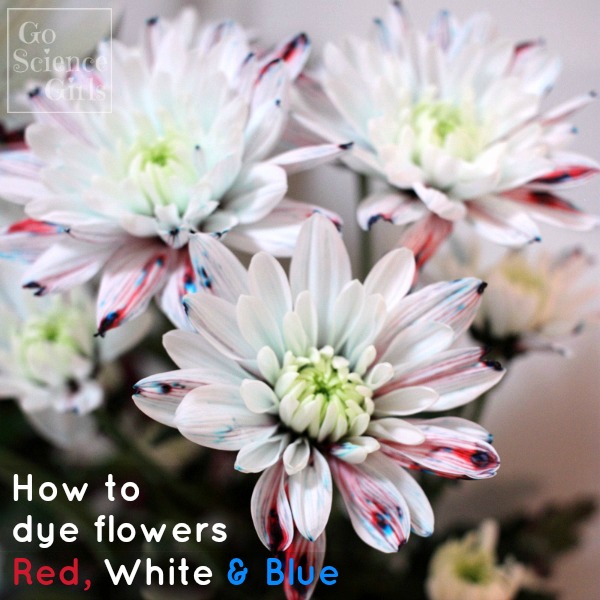
Remember how, the other day, we did a little nature experiment to see what type of flowers absorb the most vibrant colour?
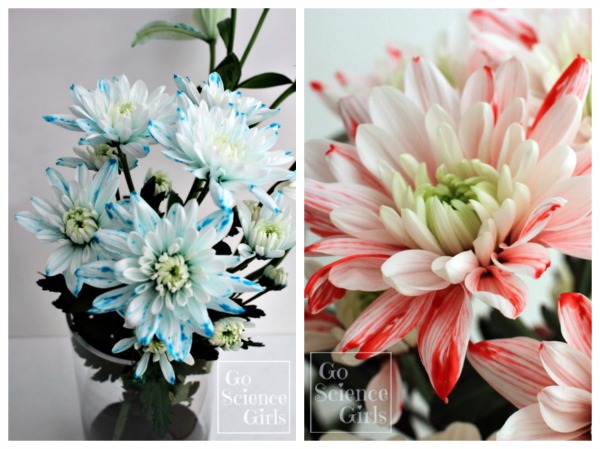
Afterwards, I looked at our red flecked flowers, and our blue flecked flowers, sitting in their vases filled with red and blue water, and I couldn’t help but wonder… what would happen if I swapped vases? If I put the blue flecked chrysanthemums into the red water, and the red flecked chrysanthemums into the blue water? Would they turn purple?
The next day, we had our answer. The flowers became streaked with both colours! Multicoloured flowers in red, white and blue.
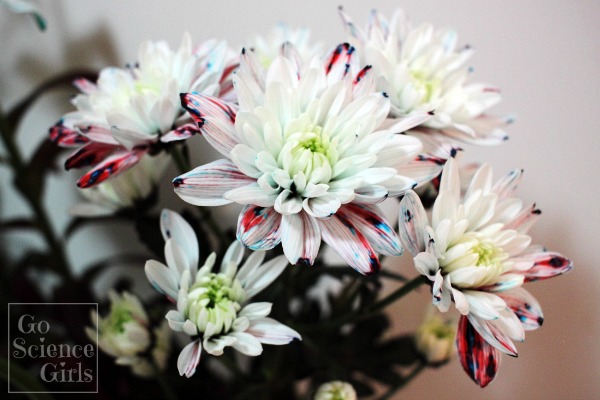
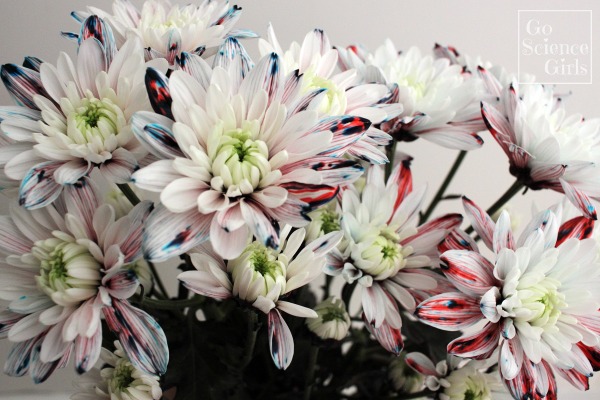
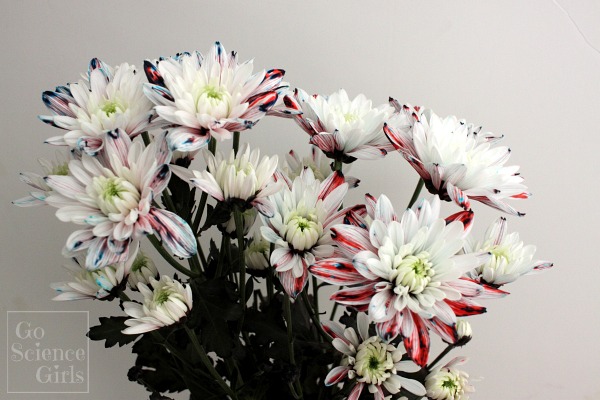
Pretty!
These flowers sat in their original colour for one night, and then in the other colour for a second night. After that, I combined them in one vase, with fresh water. They stayed fresh like this for another week. A lovely way to brighten up our kitchen!
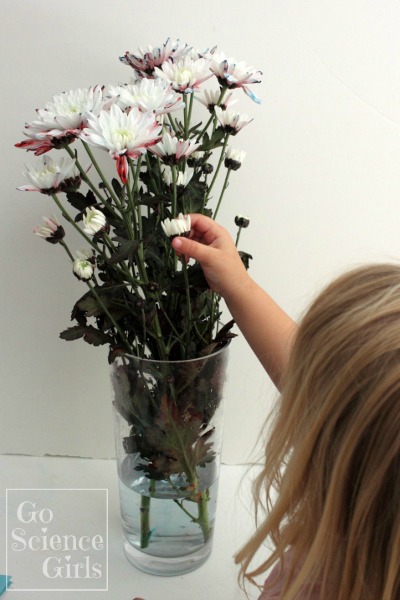
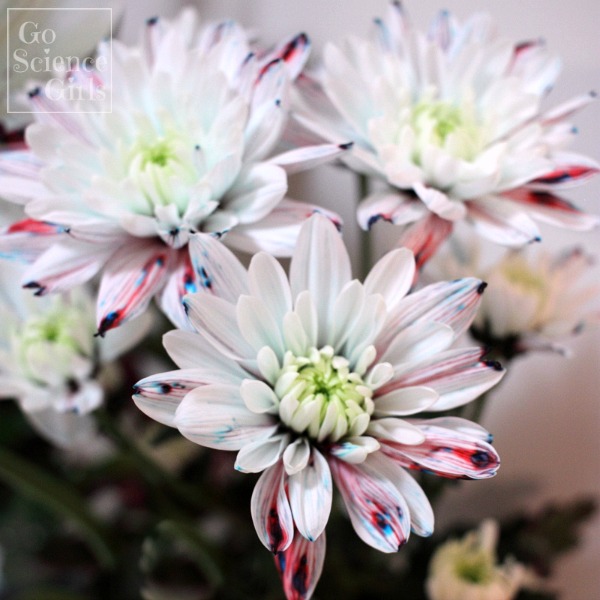
This is the third variation of this experiment that we’ve done so far. The others are below. (These also explain the science behind transpiration and how flowers absorb water.)
- this was our initial how to dye flowers experiment
- and this post shows how you can split a stem to create bicoloured flowers
- this post compared several varieties of flowers to see which flowers absorb the most vibrant colours
You can also find all our nature-based science experiments here.

#